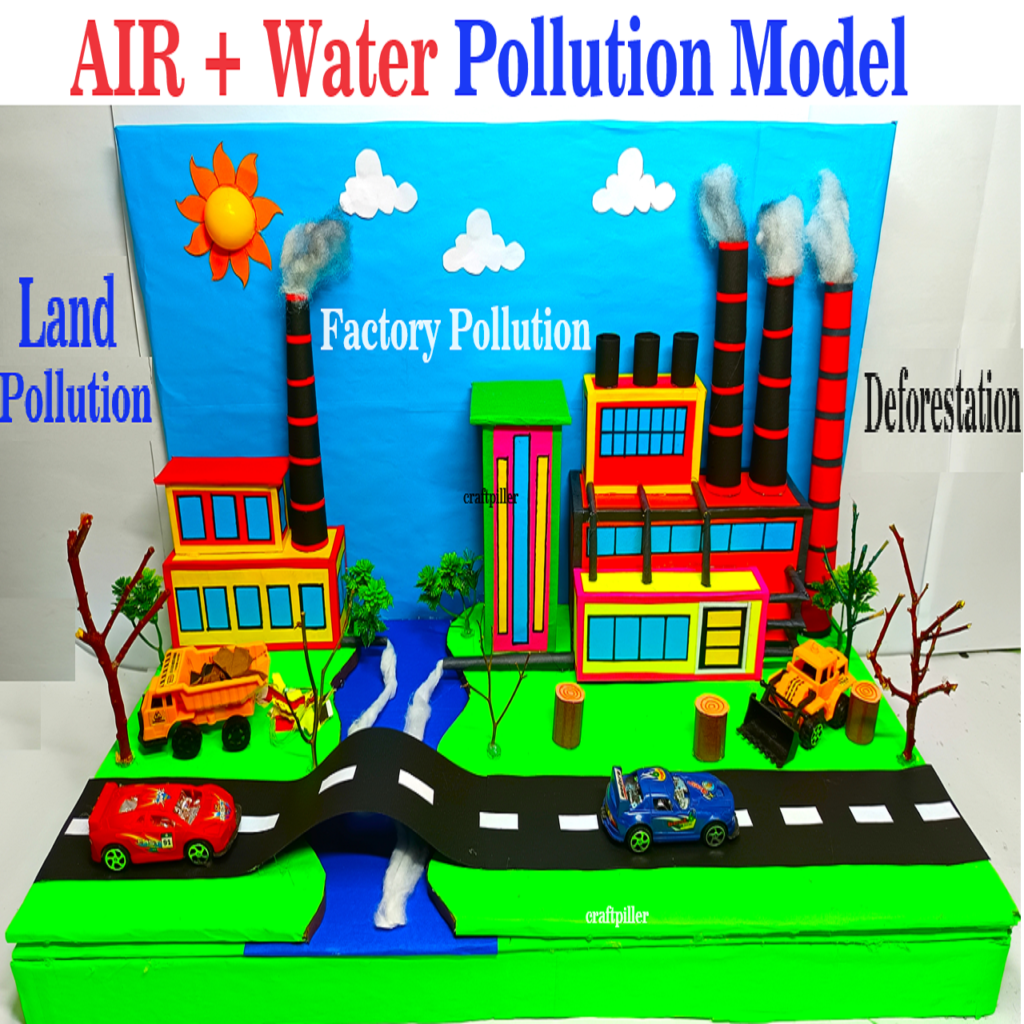Creating a science model demonstrating air and water pollution caused by factories using cardboard and colored paper can be an effective and educational project.

Here’s a step-by-step guide to building a simple yet informative model:
Materials needed:
- Cardboard or sturdy paper (for the base)
- Colored paper (various colors for representing different elements)
- Markers or pens (for labeling and detailing)
- Glue or adhesive
- Scissors
- Small containers or plastic figures (to represent factories)
- Cotton balls or other materials (to represent pollutants)
- Blue cellophane or plastic wrap (for water)
Instructions:
- Prepare the Base:
- Take a piece of cardboard or sturdy paper to serve as the base of your model. This will represent the environment affected by pollution.
- Cut the cardboard into a shape that resembles a landscape, such as hills, plains, or a coastline.
- Create Factories:
- Use small containers or plastic figures to represent factories. You can use different colors of paper to create buildings or smokestacks for the factories.
- Glue the factory representations onto the cardboard base in strategic locations to simulate industrial areas.
- Simulate Air Pollution:
- Cut out small clouds or smoke shapes from colored paper to represent air pollutants emitted by the factories.
- Glue these cloud shapes near the factory representations, indicating the release of pollutants into the air.
- Simulate Water Pollution:
- Create bodies of water on your cardboard base using blue-colored paper or blue cellophane. This can represent rivers, lakes, or oceans.
- Place cotton balls or other materials soaked in colored water near the factories to represent pollutants flowing into the water bodies.
- Label and Detail:
- Use markers or pens to label the different components of your model, such as factories, air pollutants, and water bodies.
- Add details to your model, such as trees, houses, or other features to represent the surrounding environment affected by pollution.
- Discuss the Model:
- Once your model is complete, use it as a visual aid to discuss the concept of air and water pollution caused by factories.
- Explain how factories emit pollutants into the air, contributing to air quality issues such as smog and respiratory problems.
- Discuss how pollutants from factories can also contaminate water sources, affecting aquatic life and human health.
- Explore Solutions:
- Encourage brainstorming solutions to address air and water pollution, such as implementing cleaner production technologies, enforcing environmental regulations, and promoting sustainable practices.
- Display and Present:
- Display your completed model in a classroom, science fair, or community event to raise awareness about the impacts of factory pollution on the environment and human health.
By following these steps, you can create a visually engaging science model that effectively demonstrates the concepts of air and water pollution caused by factories using simple materials like cardboard and colored paper. Adjustments can be made based on available resources and desired level of detail or complexity.

